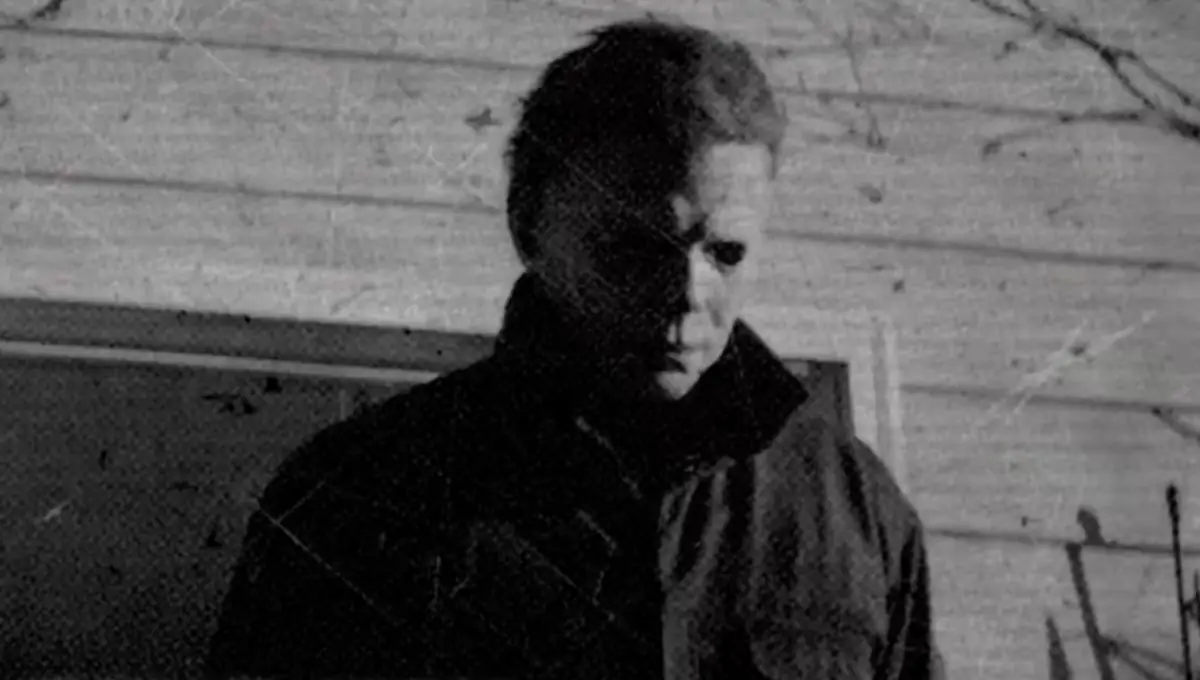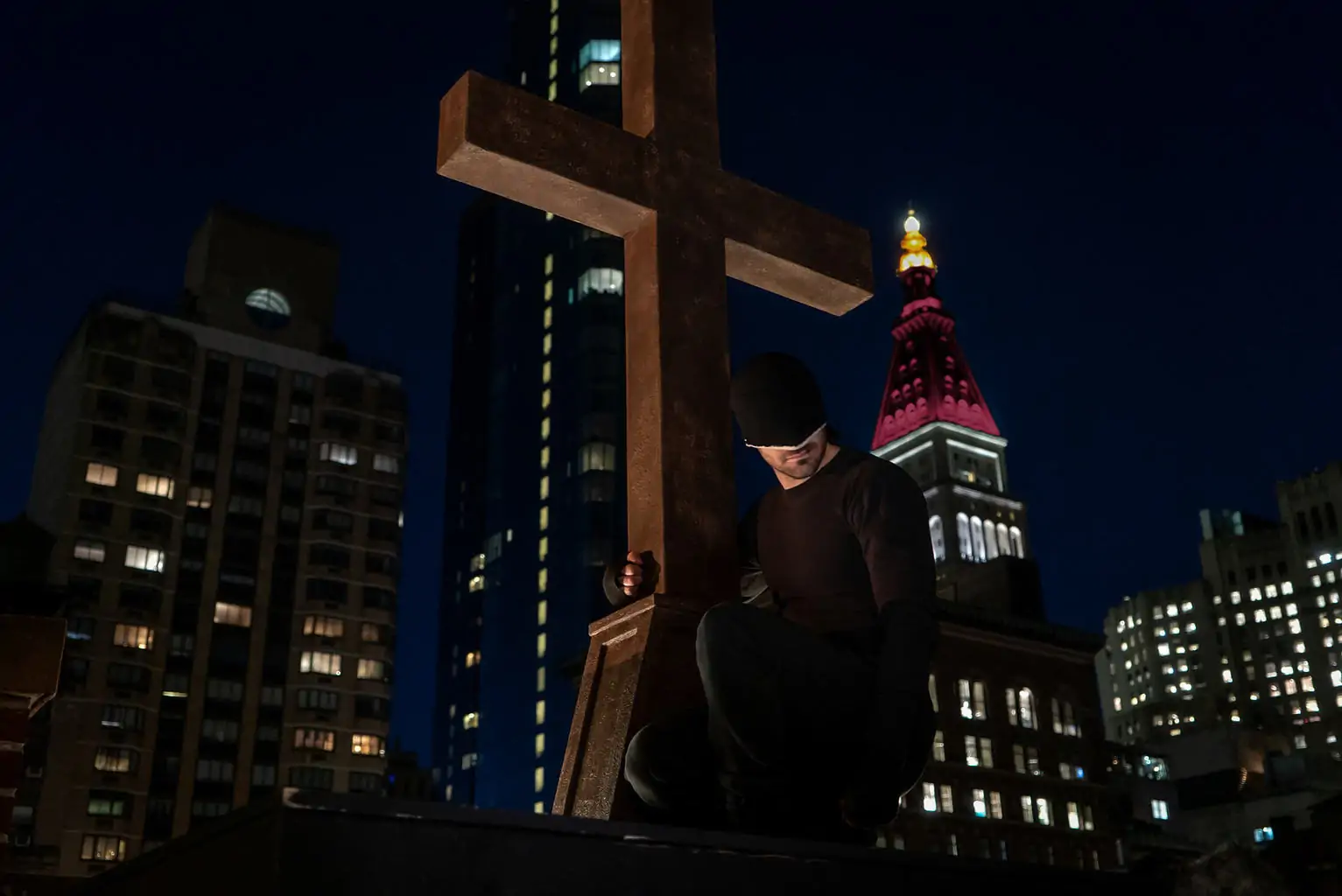
Of its many innovations within the horror genre, Halloween doesn’t receive enough credit for how it folds the rhythm of a scary movie back on itself. Here’s what that means: In a typical scary movie, tension builds so you start dreading the climax of the scare, then the climax hits—a spurt of violence, a sudden scream, the killer appearing in the mirror—and you freak out before you calm back down and the tension starts building again.
Think of it this way: Creepy feeling, creepier feeling, SCARY THING, relief. Halloween reverses that pattern: Creepy feeling, creepier feeling, SCARY THING, creepier feeling, creepy feeling, creepier feeling, SCARY THING AGAIN OH NO! This pattern emerges thanks to the movie’s villain, Michael Myers.
Here’s the premise of the original Halloween (from 1978): On Halloween night, a 6-year-old boy named Michael Myers stabs his sister to death without explanation. Fifteen years later, Michael escapes the asylum and goes back to his hometown to keep killing. He never talks, he never runs, and we never see his face thanks to a now-iconic mask. If you keep your context to the original movie and the (scary-in-a-fun-way) reboot out this year, there’s pretty much zero backstory beyond that. Michael Myers is a complete cipher. He’s literally nothing except a killer.
That blank slate contributes directly to Halloween’s rhythmic reversal of horror. Both the original and the revival this year specialize in long tracking shots that follow Michael as he hunts down his next victim. The tension builds while Michael appears and disappears and appears and disappears and then BOOM Michael makes the kill, usually to the cue of a jump scare. But then the horror lingers because, yeesh, more often than not we just sit there looking at Michael in the aftermath of the violence. He straightens up. He looks around. He starts walking again. On to the next one.
Halloween removes all of Michael Myers’ murders from context, because Michael Myers has no context except his apparent insanity. We don’t know his motives, but his motives are unknowable anyway. His violence doesn’t make sense, but it’s also totally senseless. Michael is so anti-human that to understand him on a human level is impossible. That makes him terrifying, but fascinating, too.
Unexplainable evil has appeared in lots of movies, especially after 9/11. The timestamp follows given the era’s overall murkiness and complexity, but remember, Halloween came out in 1978. That means Michael Myers’ very presentation is devoid of explanation, something his new-millennium bedfellows don’t enjoy. The Dark Knight’s Joker, No Country for Old Men’s Chigurh and The Strangers’ masked invaders all have conceptual roots in the climate of the War on Terror. Michael Myers has roots in…gosh, nothing? No one had ever seen anything like Michael before Halloween. He made way for the slasher movie as we know it. We’ve been guessing about this guy for 40 years.
One of the original Halloween’s classic lines comes from Dr. Loomis, Michael Myers’ psychiatrist from the asylum. It’s a thesis for the villain, in a sense: “I met [Michael Myers] 15 years ago. I was told there was nothing left; no reason, no conscience, no understanding of life or death, good or evil, right or wrong. I met this 6-year-old child with this blank, emotionless face, and the blackest eyes—the Devil’s eyes. I spent eight years trying to reach him, and then another seven trying to keep him locked up, because I realized behind that boy’s eyes was purely and simply … evil.”
In any other movie, this would read as corny anti-hype, but in Halloween (thanks in part to terrific delivery from actor Donald Pleasence), the speech works because it has supporting evidence throughout the rest of the movie. Michael Myers can’t be explained in any terms besides evil. It’s just that simple, and he and his movies are scarier for it.
Some might say Michael Myers works as a villain because he’s representative of the unknown, but that’s not quite how it works. There’s a difference between what we don’t know and what we can’t explain. We know cancer; we can’t explain when it returns after months of remission. Real fear isn’t about uncertainty, it’s about certainty in our own lack of control. The scariest things can be seen a mile off, but make us feel powerless to stop them. That’s Michael Myers. He doesn’t run because he doesn’t need to run. He can’t be impeded or, it would seem, killed. He’s inevitable.
Halloween might be considered sadistic for this, but reality doesn’t always offer an explanation and context is pretty overrated. That’s true of these movies (It doesn’t matter why Michael Myers is killing people because, yo, Jamie Lee Curtis is about to show him who’s boss!) and it’s true of the world. Do you need to know why the cancer came back to start fighting it? Do you need to know why you were laid off to start looking for another job? Do you need to know why a hurricane formed to start rebuilding your community? It’s a fool’s errand, sometimes, to gather all the information before you act; the killer’s right behind you!
This isn’t to say Michael Myers is designed to be a morality lesson, or the Halloween movies of 1978 and 2018 offer rich, nuanced examinations of good and evil. These are stylish, slick, simple fright flicks about a senseless killer and the one woman determined to stop him. That’s it. You don’t need a backstory to understand evil, but you don’t need understanding to fight back.






















